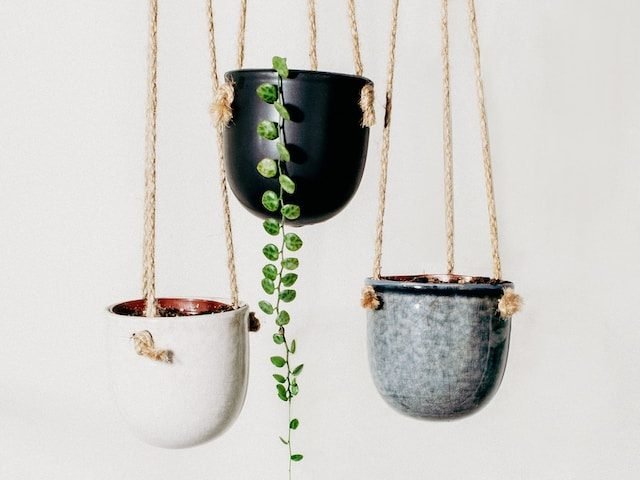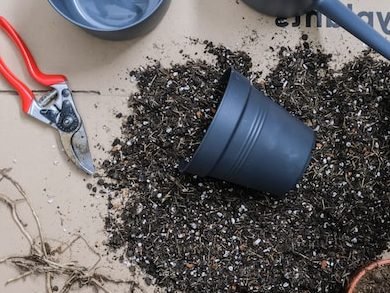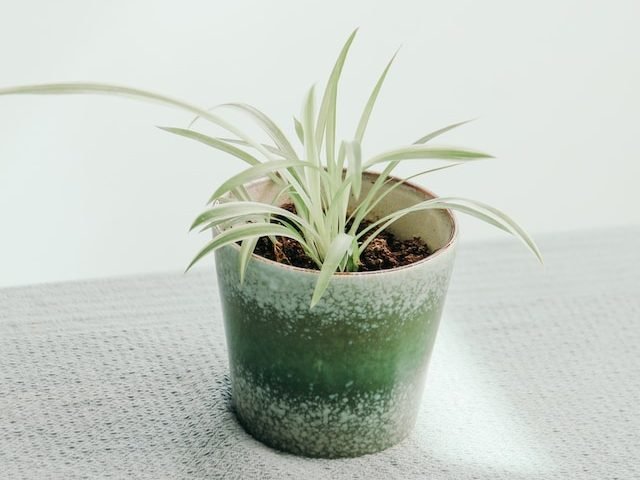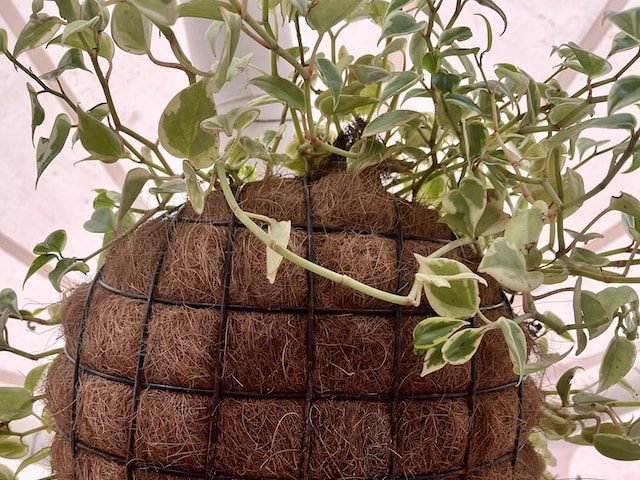String of Turtles Plant

Loved for its petite leaves, the String of Turtles, scientifically known as Peperomia prostrata, is a very popular trailing houseplants.
Native to the rainforests of Brazil, this compact creeper is part of the Peperomia family, known for their incredible adaptability to indoor environments. This plant’s succulent-like qualities help it store water efficiently for periods of drought.
Though its delicate aesthetic may suggest otherwise, the String of Turtles is renowned for being easy to propagate.
Contents
- Why Propagate a String of Turtles?
- Gathering the Necessary Tools and Materials
- Preparing the Parent String of Turtles Plant for Propagation
- Taking Cuttings from the Parent Plant
- Allowing Cuttings to Callus
- Planting your String of Turtles Cuttings in Water
- Providing Optimal Environmental Conditions
- Troubleshooting Common Issues
- Transferring Propagated Cuttings to Soil
- Frequently Asked Questions
Why Propagate a String of Turtles?
Propagation offers a range of benefits you might not have thought about!
First of all, propagation allows you to multiply your plants and have String of Turtles throughout your home or even your office. It’s a cost-effective way to grow your indoor garden without needing to purchase new plants.
Besides, propagation can serve as a back-up plan in case your original String of Turtles plant faces a health issue.
Another one of our favourite benefits of propagation is being able to gift cuttings or small plants to friends and family!
Gathering the Necessary Tools and Materials
Before you can delve into the exciting process of propagating your String of Turtles plant, it’s important to ensure you have the right tools and materials on hand.
- Pruning shears or sharp scissors: Sterilized, sharp cutting tools are essential for making clean incisions on the plant, which can reduce the risk of infection on the cut surfaces. Pick tools that provide a neat cut without causing unnecessary harm to your String of Turtles plant.
- Propagation medium: Although String of Turtles can be propagated in water, you’ll need some potting mix to move them into once they’ve grown new roots.
- Rooting hormones: Though optional, these can help assist the cutting in developing roots faster. You can find these in a powder or liquid form at most garden supply stores.
- Containers: Small pots or growing trays work well for starting cuttings. Make sure they have drainage holes to prevent waterlogging.
- Plastic bag or cover: This helps to retain humidity around the plant cuttings, aiding in their growth. A transparent plastic bag or an upside-down clear plastic container would work well.
Preparing the Parent String of Turtles Plant for Propagation
First off, you want to ensure your String of Turtles mother plant is strong and healthy. Struggling plants often don’t have the energy to produce new growth.
In the weeks prior to propagating, make sure you are caring for your String of Turtles plant correctly. This includes:
- Watering: Don’t let the plant dry out entirely, but also don’t waterlog it. The soil should be somewhat moist.
- Light: These plants prefer plenty of bright, indirect sunlight.
- Feeding: A balanced, water-soluble houseplant fertilizer once a month should suffice.
When deciding which part of your String of Turtles plant to propagate, look for stem sections that appear robust and full of leaves. These will have the best chance of propagating successfully. Avoid stems that look discolored, wilted, or otherwise unhealthy.
Taking Cuttings from the Parent Plant
Stem cuttings are the best route for propagating your String of Turtles plant. To take a stem cutting, select a healthy, full vine from the parent plant.
With sterilized scissors or a sharp, clean knife, make your cut just below a node (the point where a leaf joins the stem). Aim to cut sections that are two to four inches long, as larger cuttings can be more challenging to root.
Allowing Cuttings to Callus
After you’ve taken your cuttings, the next step is the callusing process. Callusing is when the cut ends of the plant stem or leaves form a hardened, dry layer, almost creating a protective ‘scab’.
This process is important in String of Turtles propagation as it helps prevent the onset of rot or disease when the cuttings are eventually placed in a propagation medium.
So, how do let your cuttings callous?
The first thing you’ll need to do is lay out your cuttings on a clean, dry surface, cut-side up. Generally speaking, it takes about 3–7 days for the cuttings to callus properly.
The duration can vary based on the environmental conditions, like temperature and humidity. You’ll know that your cuttings have callused adequately when the cut end feels dry and looks slightly off-white in color.
Planting your String of Turtles Cuttings in Water
Once your String of Turtles cuttings have completed the callousing process, the next step is to place them into some water (but you can also choose potting soil).
Choose a transparent container that is large enough to submerge some of your cutting, but not the entirety.
You want to choose temperate water as hot or cold water can shock or burn your String of Turtles cutting, which will lead to an unsuccessful propagation.
The next stage is simply waiting for several weeks while your new cuttings grows some roots. This stage requires a lot of patience because there is no way of knowing exactly how long it will be. This is why we like to have a transparent container, as you can see clearly what’s going on.
During this time, make sure that you are switching out the water every few days to prevent it from stagnating, and bacteria growing.
Then once the roots are an inch or so long, your cutting is ready to be transferred into a well draining potting mix, and cared for like an adult String of Turtles.
Providing Optimal Environmental Conditions
Firstly, let’s talk about light. Your newly propagated String of Turtles likes bright, indirect sunlight. Avoid direct sunlight as this can cause your String of Turtles cutting to wither, so make sure to place them in a well-lit vicinity but out of the direct rays of the sun.
Next on the list is temperature. These plants are tropical by nature but thrive at room temperatures between 65°F to 85°F (18°C to 29°C).
In terms of humidity, they love a good level of moisture. The goal here is to strike a balance: not too dry, but also not overly damp.
You can maintain this by misting your plants regularly or using a humidity tray.
Troubleshooting Common Issues
Brown or Yellow Leaves
Brown or yellow leaves can be a sign of overwatering if you have already transferred your cutting into potting mix. Remember, String of Turtles plants prefer slightly dry soil.
Water the cuttings sparingly and ensure the propagation medium offers excellent drainage. Make adjustments to your watering schedule if necessary – but remember, less is more when it comes to watering these plants.
If your String of Turtles cutting is still growing in water, but has developed brown or yellow leaves, then it may be due to light issues, temperature fluctuations or stagnant water.
Slow Growth
Are your cuttings growing slower than you expected? This issue may be due to inadequate light, cold temperatures or a tiny container.
Addressing these factors and patiently providing your String of Turtles plant the care it needs will usually lead to improved growth.
Transferring Propagated Cuttings to Soil
Now that you’ve patiently watched your little String of Turtles sprout roots, it’s time to give them more space to grow.
Firstly, you don’t want to rush things: wait until the roots of your new String of Turtles cuttings have sufficiently developed in water before transferring to soil.
Choose a pot that will comfortably fit your cuttings and their roots, while giving them a bit of space to grow, but not too much. The pot should have good drainage to prevent the risk of waterlogging or root rot.
Add a layer of potting mix at the bottom of the new pot, then place your String of Turtles plant in, positioning it at the center. The plant should not be too deep inside the pot.
Once secure, gently fill in around your plant with more potting mix, but don’t pack it too tightly; remember, roots need to breathe.
In the ensuing weeks, closely monitor your repotted String of Turtles, watching for signs of stress or shock. Temporary drooping or leaf drop is normal at this stage, but it should bounce back after a while.
Frequently Asked Questions
1. How often should I water my String of Turtles cuttings?
The key thing to remember here is: less is more. Overwatering can lead to root rot. Always ensure that the top layer of the soil dries out before the next watering. Typically, you should water every 7-10 days.
2. How long does it take for String of Turtles cuttings to root?
Patience is vital when it comes to any plant propagation. While the timeframe can vary depending on environmental conditions and the overall health of your String of Turtles cutting, you can generally expect to see roots forming after 2-3 weeks.
3. Can Ipropagate String of Turtles in water?
Yes, you can propagate the plant in water. Submerge the cut end in a jar of water and change the water every few days to prevent it from becoming stagnant. Once the cuttings develop roots, you can then move them to a potting mix.
4. Why are my String of Turtles cuttings not growing?
A multitude of factors may be at play here. It could be down to an issue with lighting, temperature, or even the health of the parent plant itself.
5. When is the best time to propagate my String of Turtles?
The optimal time to propagate most plants, including the String of Turtles, is during the growing season. This is usually in the spring or early summer. The plant should have an easier time establishing itself when it’s naturally inclined to grow.















